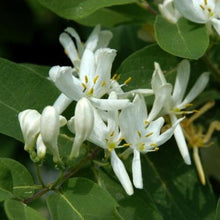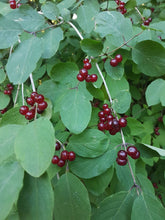Characteristics
The honeysuckle is also called the red honeysuckle. It also listens to the botanical species name Lonicera xylosteum. We owe the name of this shrub-like plant to the ancient Greeks. He points out the bone-like wood. The shrubby honeysuckle can reach heights and widths of 1-3 meters. It is characterized by an upright and bushy growth.
Pollination and foliage
Lonicera xylosteum is monoic. Both cross pollination and insect pollination can be recorded as types of pollination. Insects of the genus Hymenoptera are responsible for the latter type of pollination. The wood bumblebee can be cited as an example. The egg-shaped leaves are not only characterized by a simple leaf structure but also by an opposing leaf arrangement and a smooth leaf margin. The flowers delight the viewer in May and June with a yellow and white color. However, the red fruits provide less pleasure due to their significant toxicity. We therefore urgently advise against consumption.
Soil condition
The red honeysuckle likes calcareous and nutrient-rich soils. In addition, that soil should be moderately dry to moderately moist. A soil with an alkaline to slightly acidic pH value is well suited for Lonicera xylosteum.
Provenance
Lonicera xylosteum occurs almost everywhere on the European continent. It can also be found in Asia Minor. In the Alps, the honeysuckle grows at an altitude of up to 1,400 meters.
Uses
The red honeysuckle is an extremely good choice for a variety of purposes. It is very popular with some birds and small mammals. Lonicera xylosteum is therefore predestined for use as a bird protection tree. Thus, it represents a relevant enrichment for the biodiversity in the forest ecosystems. This applies in particular to comparatively herbaceous linden or elm and mixed coniferous forests. But Lonicera xylosteum also always cuts a fine figure as a floor attachment and as a free-growing hedge.




